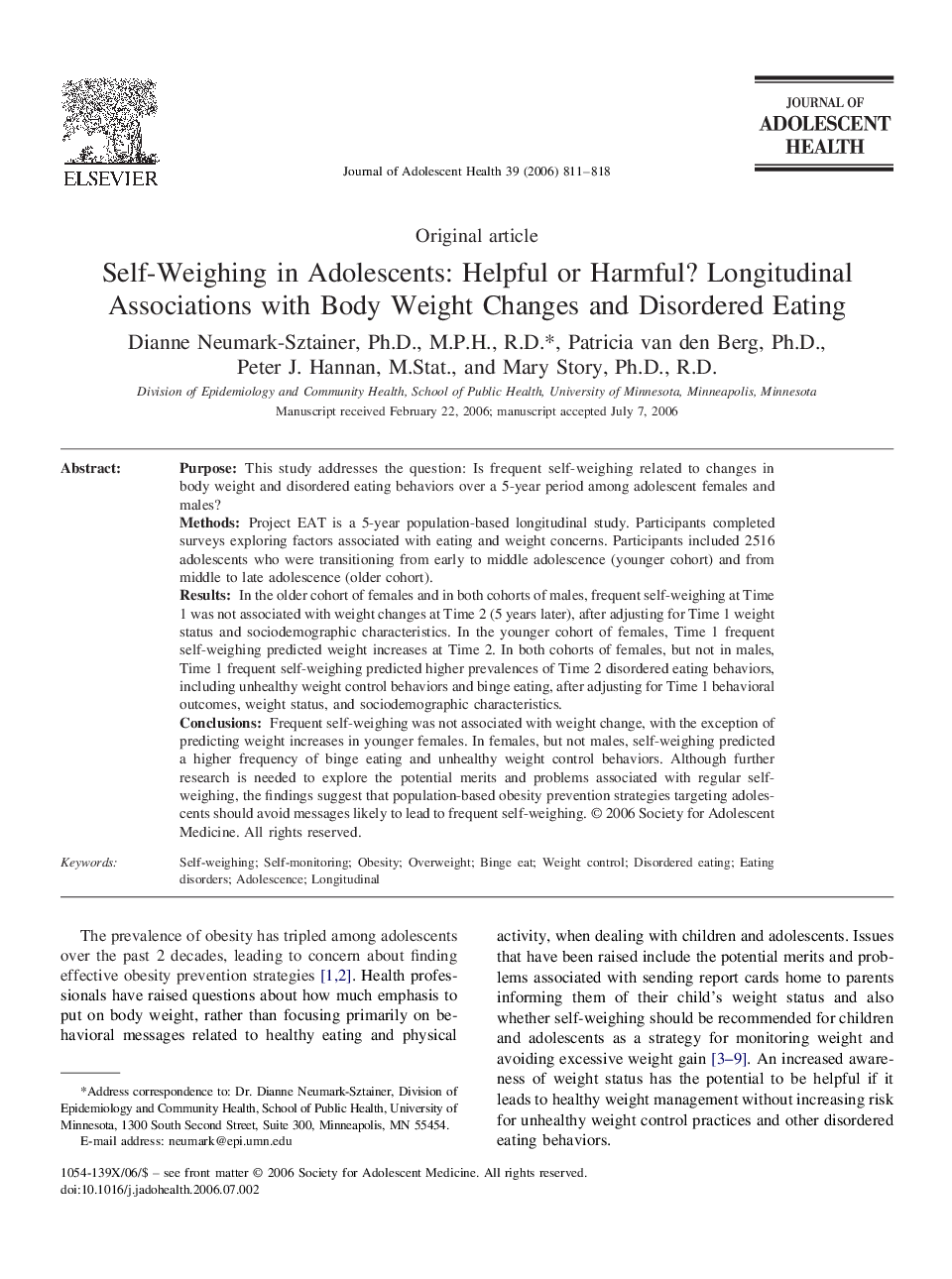| Article ID | Journal | Published Year | Pages | File Type |
|---|---|---|---|---|
| 1081656 | Journal of Adolescent Health | 2006 | 8 Pages |
PurposeThis study addresses the question: Is frequent self-weighing related to changes in body weight and disordered eating behaviors over a 5-year period among adolescent females and males?MethodsProject EAT is a 5-year population-based longitudinal study. Participants completed surveys exploring factors associated with eating and weight concerns. Participants included 2516 adolescents who were transitioning from early to middle adolescence (younger cohort) and from middle to late adolescence (older cohort).ResultsIn the older cohort of females and in both cohorts of males, frequent self-weighing at Time 1 was not associated with weight changes at Time 2 (5 years later), after adjusting for Time 1 weight status and sociodemographic characteristics. In the younger cohort of females, Time 1 frequent self-weighing predicted weight increases at Time 2. In both cohorts of females, but not in males, Time 1 frequent self-weighing predicted higher prevalences of Time 2 disordered eating behaviors, including unhealthy weight control behaviors and binge eating, after adjusting for Time 1 behavioral outcomes, weight status, and sociodemographic characteristics.ConclusionsFrequent self-weighing was not associated with weight change, with the exception of predicting weight increases in younger females. In females, but not males, self-weighing predicted a higher frequency of binge eating and unhealthy weight control behaviors. Although further research is needed to explore the potential merits and problems associated with regular self-weighing, the findings suggest that population-based obesity prevention strategies targeting adolescents should avoid messages likely to lead to frequent self-weighing.
